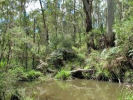 People concerned about Harkaway, in the Green Wedge, near Berwick are asking for your help to stop development ruining this lovely area. Why don’t you write to the Minister too and plead with him to say "NO." Submissions urgently needed before 5pm on 6 November. Subject: Proposed Rosemaur development for King Road Harkaway, Email to: [email protected] Details inside article.
People concerned about Harkaway, in the Green Wedge, near Berwick are asking for your help to stop development ruining this lovely area. Why don’t you write to the Minister too and plead with him to say "NO." Submissions urgently needed before 5pm on 6 November. Subject: Proposed Rosemaur development for King Road Harkaway, Email to: [email protected] Details inside article.
To all who care about preserving special places like Harkaway and their green wedge surrounds: 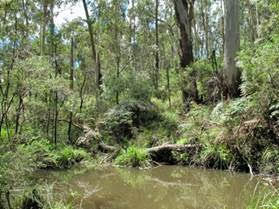
Harkaway is a hidden gem tucked away in the rolling foothills to the Dandenong Ranges just north of Berwick in the City of Casey. Until now, State Governments of both “colours” have agreed it should be sacrosanct - a “no go” zone for urban use development.
Wealthy Melbourne businessman Lindsay Hogg wants Planning Minister Richard Wynne to rezone his property in the middle of Harkaway’s precious Green Wedge land to enable an otherwise prohibited development including a restaurant, function centre and art gallery.
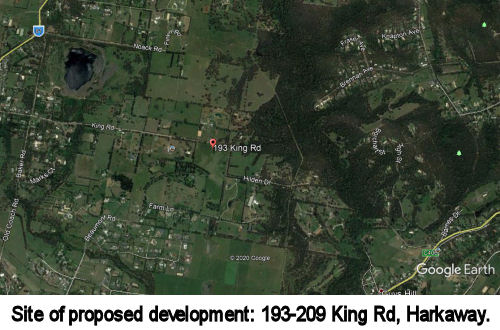
We are not against the concept, but looked at from every angle, this is the wrong location. It would bring large volumes of regular traffic into a dead end, high fire risk area, right through the tiny hamlet.
The local community will be subjected to this onslaught seven days a week, from 7am through to 1am Friday/Saturday, and until 11pm for the other five days, including Sunday.
Lunch patrons who have "wined and dined" would be passing the primary school where two cars can’t get by each other at pick up time, and there is no scope for widening. Many children walk or ride bikes to and from school or to the shop, park, tennis courts and playground, especially at weekends.
The change that would result from such a rezoning would be enormous and irreversible. The bushland and rural character of King Road would be transformed into an urbanised streetscape, with significant potential for environmental damage to Walsdorf Creek and increased traffic accidents.
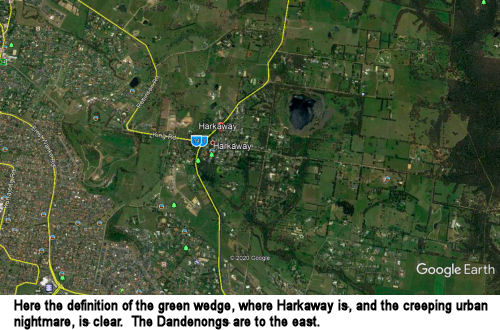
The local community is united against this development, but its voice is drowned out by the media campaign of Mr Hogg’s PR team which is presenting the application as a “fait accompli”.
The Planning Minister is seeking feedback on the proposal.
Please refer to the attached information sheet to help you provide it - loud and clear.
Save the Casey Foothills Association is joining forces with the Friends of Harkaway Association and the Harkaway Residents Group to try and prevent what would be a grotesque anomaly in this location.
There are far better alternative site options that would result in an improved outcome for the venture.
Please make a submission before 6 November and help prevent this potential catastrophe.
Or if you miss this deadline, please email it direct to the Minister.
Political pressure is the only way to protect our increasingly threatened special places from assault by powerful monied forces with their own agendas.
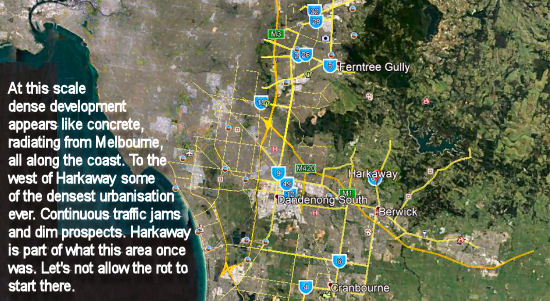
HARKAWAY & ITS GREEN WEDGE ARE UNDER SERIOUS IMMINENT THREAT
From what?
A SITE SPECIFIC AMENDMENT TO THE CASEY PLANNING SCHEME BY THE PLANNING MINISTER TO REZONE ONE PROPERTY IN THE MIDDLE OF HARKAWAY’S PRECIOUS GREEN WEDGE LAND.
For what purpose?
TO ENABLE AN OTHERWISE PROHIBITED LARGE SCALE URBAN DEVELOPMENT IN KING ROAD – NAMELY AN ART GALLERY, FUNCTION CENTRE, RESTAURANT AND TWO DWELLINGS.
What can I do?
MAKE A SUBMISSION BEFORE THE CLOSING DATE (See below for details)
What is the time frame?
SUBMISSIONS NOW ACCEPTED UNTIL 5:00 PM, FRIDAY 6 NOVEMBER 2020.
The Government had given the neighbours only 4 weeks’ notice & has not advised the village or other outlying residents at all. An extension of 3 months was sought. We got an extra 2 weeks.
How can I get more information?
Google “Rosemaur Gallery”. Select “Planning”, then “Documents” tab, OR type into your Search bar https://www.planning.vic.gov.au/policy-and-strategy/rosemaur-gallery#documents, or just click on the link below:
https://www.planning.vic.gov.au/policy-and-strategy/rosemaur-gallery#documents
Who to contact if I have a question?
State planning department: Hayley Becker – Manager Planning Services (South) Ph: 0423 491 851
Local community rep: Philip Battye Mob: 0407 012 006 Email: [email protected]
Green Wedges rep: Rosalie Counsell Mob: 0429 955 421 Email: [email protected]
What are the main issues? (See “Further Considerations” below for expanded list)
Planned large volumes of related traffic will be funnelled through the village past its primary school.
Widening and sealing King Road would:
o Destroy the character and identity of Harkaway as a country hamlet in a semi-rural bushland setting;
o Risk damage to the environmentally sensitive Waldorf Creek.
The site is in an increasingly high fire risk area at the far extremity of a dead end road.
The only escape route would entail annexing and sealing the equestrian trail, thus turning both King Road Harkaway and Farm Lane Berwick into through roads.
The proposal contradicts the very purpose of the existence of the green wedges and makes a mockery of the Planning Minister’s promise to further protect them.
What next? How to make a submission
Email your submission to: [email protected]
(This can be addressed to Mr Stuart Menzies, Director - State Planning Services and Cc’d to the Planning Minister: [email protected])
Remember – one sentence is better than nothing. Just say what you want to say in your own words, and you’ll be able to expand on or speak to this for the Panel Hearing, currently scheduled for next January 2021, should you wish to do so.
Further considerations
For over 20 years, our local residents have fought and won numerous battles to protect Harkaway’s special environmental and amenity values. On each occasion, State Government has supported the contention that these values must be preserved at all costs and Harkaway deemed sacrosanct.
Never before has our community been disenfranchised by Government in this way.
This application constitutes complete disregard for local community and for democratic process.
o People who live in and/or regularly visit the village of Harkaway would be as adversely affected as anyone else but were not notified.
o The short time frame and failure to consult affected parties raises the question of undue influence, or at best, democracy being compromised in the interests of misguided economic expediency.
Harkaway Road itself is fairly narrow and winding. It’s intersection with King Road is dangerous, despite the very small, inadequate roundabout. (No room for bigger one.)
The in-principle acceptance of the application is claimed to be partly based on the supposed value of the art collection. But it appears there has been no proper assessment of its real value. Regardless, this should not drive a planning decision.
The whole district is a Designated Bushfire Prone Area, and an estimated 40% of site is subject to the even more restrictive Bushfire Management Overlay.
There are no reticulated services in the area except electricity.
Harkaway’s 175 year old history, it’s unspoiled non-urban character, its wonderful landscapes and its high-value biodiversity should qualify the whole area as having State significance. Any suggestion that an inappropriately located art gallery and function centre could trump this is a nonsense.
The direct intervention by the Planning Minister Richard Wynne:
Flouts proper planning protocols by unjustifiably bypassing local council as the primary decision-maker on changes to the Planning Scheme.
Contradicts the very purpose of the existence of the green wedge zones.
Sets a dangerous precedent for future similar damaging applications.
Pre-empts and undermines a current Government review that aims to further strengthen protections in the Green Wedge zones.
Provides a massive concession to the proponent but inflicts enormous detriment on the local community. (Note: The applicant has registered as a charity, so will presumably be exempt from certain rates and taxes.)
Flies in the face of his stated intention not to intervene in local planning decisions.
If Casey Council and the Victorian Government preside over the wanton squandering of this unique, widely treasured asset that is Harkaway – “the jewel in Casey’s crown” – for the sake of an inappropriately located, wildly experimental, fragmenting development on the basis of a nebulous promise by a vested interest landowner living elsewhere, it will go down in Casey’s history as an outrage second only to the findings of the IBAC enquiry.
Harkaway needs your help. We can’t fight this David & Goliath battle alone.

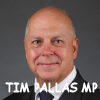 The Catholic Church owns many billions of dollars of land in Australia but does not pay any land-tax. Today, in Victoria, Australia, if you own a second property worth more than 300,000, you pay land-tax. Soon, however, property worth 50,000 and upwards will be taxed, if a new bill goes ahead.
The Catholic Church owns many billions of dollars of land in Australia but does not pay any land-tax. Today, in Victoria, Australia, if you own a second property worth more than 300,000, you pay land-tax. Soon, however, property worth 50,000 and upwards will be taxed, if a new bill goes ahead.
 Melbourne State Library 1 pm Saturday 18 March against AUKUS US $170b nuclear sub purchase and alliance
Melbourne State Library 1 pm Saturday 18 March against AUKUS US $170b nuclear sub purchase and alliance  Contents: Page 1 – Heritage Amendment Bill 2023; Victorian Departmental Restructure; Australian Architecture President Bells the Cat; Legislative Council Planning and Heritage Inquiry; Page 2 – Submissions Closing on World Heritage Management Plan for Royal Exhibition Building and Carlton Gardens; Speech to CROWAG, and April Forum; Level Crossing Removal FOI; War on Plastic – Clean Up Australia Day; Page 3 – South Australia’s Planning Minister Flags Change
Contents: Page 1 – Heritage Amendment Bill 2023; Victorian Departmental Restructure; Australian Architecture President Bells the Cat; Legislative Council Planning and Heritage Inquiry; Page 2 – Submissions Closing on World Heritage Management Plan for Royal Exhibition Building and Carlton Gardens; Speech to CROWAG, and April Forum; Level Crossing Removal FOI; War on Plastic – Clean Up Australia Day; Page 3 – South Australia’s Planning Minister Flags Change I appreciate the opportunity for public comment on this important issue. I was the Federal Shadow Minister for Environment and Heritage when the then Federal Minister for Environment and Heritage announced the move to nominate the Royal Exhibition Building and Carlton Gardens for World Heritage listing. I have followed the history of this site with considerable interest.
I appreciate the opportunity for public comment on this important issue. I was the Federal Shadow Minister for Environment and Heritage when the then Federal Minister for Environment and Heritage announced the move to nominate the Royal Exhibition Building and Carlton Gardens for World Heritage listing. I have followed the history of this site with considerable interest.
 In this issue:
In this issue:  In this issue: 1.WELCOME TO 2023; 2.VCAT DELAYS; 3.STOP THE GREAT WALL OF FRANKSTON; 4.SUNBURY HIGH RISE TO GO TO VCAT; 5.KILMORE BUSHFIRE EVACUATION ISSUE; 6.BAD NEWS ON THE MORNINGTON PENINSULA; 7. KINGSWOOD GOLF COURSE; 8.477 SYDNEY RD. COBURG – BIKE SPACES, BUT NO CARS PLEASE; 9. PLANNING DEMOCRACY FACEBOOK PAGE; 10. WORLD HERITAGE MANAGEMENT PLAN OVERVIEW; 11.
In this issue: 1.WELCOME TO 2023; 2.VCAT DELAYS; 3.STOP THE GREAT WALL OF FRANKSTON; 4.SUNBURY HIGH RISE TO GO TO VCAT; 5.KILMORE BUSHFIRE EVACUATION ISSUE; 6.BAD NEWS ON THE MORNINGTON PENINSULA; 7. KINGSWOOD GOLF COURSE; 8.477 SYDNEY RD. COBURG – BIKE SPACES, BUT NO CARS PLEASE; 9. PLANNING DEMOCRACY FACEBOOK PAGE; 10. WORLD HERITAGE MANAGEMENT PLAN OVERVIEW; 11.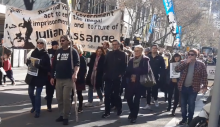 From 4pm, this coming Saturday 11 February, come down to the Victorian State Parliament to celebrate Julian Assange for the
From 4pm, this coming Saturday 11 February, come down to the Victorian State Parliament to celebrate Julian Assange for the  Doctor Monique Ryan, the independent MP for the Victorian federal seat of Kooyong, is critical of the Victorian state government's decision to restrict accesss to PCR (
Doctor Monique Ryan, the independent MP for the Victorian federal seat of Kooyong, is critical of the Victorian state government's decision to restrict accesss to PCR (
 This edition's headlines: Pre-Election forum; State Election Questionnaire Responses; Floods; Queen Victoria Market; A win at Oaklands Junction; Saving Mount Eliza's reservoir as a public wetland; Royal Exhibtion Building and Carlton Gardens; Kilmore's Equine Overlay; Beaumaris Modern Open Day; Kingston Planning Scheme Amendment C203; Hepburn Shire Biodiversity Threat; Toondah Harbour - Walker Corporation; Save Westesrn Port Woodlands; Caring for Western Port Country; Value
This edition's headlines: Pre-Election forum; State Election Questionnaire Responses; Floods; Queen Victoria Market; A win at Oaklands Junction; Saving Mount Eliza's reservoir as a public wetland; Royal Exhibtion Building and Carlton Gardens; Kilmore's Equine Overlay; Beaumaris Modern Open Day; Kingston Planning Scheme Amendment C203; Hepburn Shire Biodiversity Threat; Toondah Harbour - Walker Corporation; Save Westesrn Port Woodlands; Caring for Western Port Country; Value  Planning Democracy has designed this questionnaire to help its network of concerned community groups understand where you and/or your party stand on using the Planning Framework to give communities a genuine say in protecting Victoria’s environment, heritage and natural resources.
Planning Democracy has designed this questionnaire to help its network of concerned community groups understand where you and/or your party stand on using the Planning Framework to give communities a genuine say in protecting Victoria’s environment, heritage and natural resources. Gurwinder Singh briefly shed tears of relief, as Judge Maidment finally began to describe the case to prospective jurors, today 7 June 2022 at County Court Victoria.
Gurwinder Singh briefly shed tears of relief, as Judge Maidment finally began to describe the case to prospective jurors, today 7 June 2022 at County Court Victoria.  In this issue: Friends of Queen Victoria Market Annual General Meeting; Tree Canopy Cover Forum (Mordialloc); Tree Canopy Cover Whitehorse; Tree Canopy Cover Darebin; VCAT win to protect native grassland; Heritage win at Moonlight Head; Concrete to be removed from Moonee Ponds Creek; Surrey Hills-Mont Albert level crossing removal project; Save Lake Knox update; Beaumaris Modern update; Preserving Mornington Peninsula Open Space; Caulfield Racecourse Update; North East Link
In this issue: Friends of Queen Victoria Market Annual General Meeting; Tree Canopy Cover Forum (Mordialloc); Tree Canopy Cover Whitehorse; Tree Canopy Cover Darebin; VCAT win to protect native grassland; Heritage win at Moonlight Head; Concrete to be removed from Moonee Ponds Creek; Surrey Hills-Mont Albert level crossing removal project; Save Lake Knox update; Beaumaris Modern update; Preserving Mornington Peninsula Open Space; Caulfield Racecourse Update; North East Link Report on the Heritage Protection Forum; Where to from here; Federal Elections; Australian Heritage Advocacy Alliance 2022 Campaign; Save Lake Knox; Brunswick - good and bad news; Submissions open for Melbourne Observatory Lighting Works; Wattle Park Update; Kilmore Land update; Queen Victoria Market update; Mt Eliza Village entry way; Elsternwick Structure Plan; Glenlyon; Hawthorn Institute of Education to become apartments; Sprawling cities are over-running global biodiversity; The
Report on the Heritage Protection Forum; Where to from here; Federal Elections; Australian Heritage Advocacy Alliance 2022 Campaign; Save Lake Knox; Brunswick - good and bad news; Submissions open for Melbourne Observatory Lighting Works; Wattle Park Update; Kilmore Land update; Queen Victoria Market update; Mt Eliza Village entry way; Elsternwick Structure Plan; Glenlyon; Hawthorn Institute of Education to become apartments; Sprawling cities are over-running global biodiversity; The
 The Victorian Legal Services Commission was created to ensure that complaints against Australian legal practitioners and disputes between law practices or Australian legal practitioners and clients are dealt with in a timely and effective manner and to protect both consumers of legal services and the public interest in the proper administration of justice.
The Victorian Legal Services Commission was created to ensure that complaints against Australian legal practitioners and disputes between law practices or Australian legal practitioners and clients are dealt with in a timely and effective manner and to protect both consumers of legal services and the public interest in the proper administration of justice.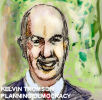
 From Clifford Hayes: "Next week in Parliament I am introducing a Bill to amend the Planning and Environment Act of 1987 to give this Act some environmental legitimacy. As it stands, it would be more fitting to call it the Planning and Development Act. That's why I'm fighting for change to ensure that the environment is given a high priority in all planning decisions. It aims to enhance to Act by strengthening the objectives to protect the environment.
From Clifford Hayes: "Next week in Parliament I am introducing a Bill to amend the Planning and Environment Act of 1987 to give this Act some environmental legitimacy. As it stands, it would be more fitting to call it the Planning and Development Act. That's why I'm fighting for change to ensure that the environment is given a high priority in all planning decisions. It aims to enhance to Act by strengthening the objectives to protect the environment.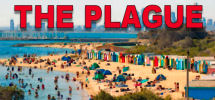 During Victoria's lockdown(s), I re-read The Plague, by Albert Camus, which was a prescribed text for me and other Higher School Certificate students (Year 12) way back in 1972. The plot concerns the Algerian town of Oran, which is struck down by bubonic plague in the 1940s. The townsfolk are sealed off and isolated from the outside world, as the plague exacts an increasingly terrible and deadly toll. The book depicts their different reactions to their situation. It has immense power in getting to the heart of what things, and what values, are important in life.
During Victoria's lockdown(s), I re-read The Plague, by Albert Camus, which was a prescribed text for me and other Higher School Certificate students (Year 12) way back in 1972. The plot concerns the Algerian town of Oran, which is struck down by bubonic plague in the 1940s. The townsfolk are sealed off and isolated from the outside world, as the plague exacts an increasingly terrible and deadly toll. The book depicts their different reactions to their situation. It has immense power in getting to the heart of what things, and what values, are important in life.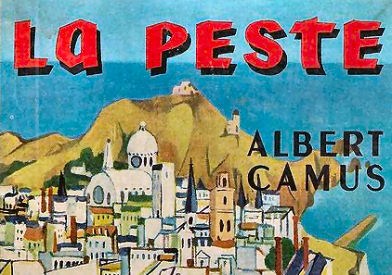 The plague in Oran, and the coronavirus pandemic in Australia, have some clear differences. While the people of Oran are cut off from the world, they are not cut off from each other. They mix at restaurants and cafes and the like. Social distancing doesn’t play any noticeable role – whether this was wise from a health perspective is not spelt out.
The plague in Oran, and the coronavirus pandemic in Australia, have some clear differences. While the people of Oran are cut off from the world, they are not cut off from each other. They mix at restaurants and cafes and the like. Social distancing doesn’t play any noticeable role – whether this was wise from a health perspective is not spelt out. Sustainable Population Australia (SPA) has welcomed the latest figures from the Australian Bureau of Statistics (ABS) that show population growth has fallen to near zero (0.1 per cent) despite an apparent baby boom. Yesterday, the ABS released figures for the year ending March 31. Australia’s population grew by 35,700 or 0.14 per cent. Annual natural increase was 131,000 and net overseas migration (NOM) was -95,300. This news came not long after NSW Health announced more than 19,000 babies were born in NSW hospitals from April to June this year, a nine per cent increase on the same period last year.
Sustainable Population Australia (SPA) has welcomed the latest figures from the Australian Bureau of Statistics (ABS) that show population growth has fallen to near zero (0.1 per cent) despite an apparent baby boom. Yesterday, the ABS released figures for the year ending March 31. Australia’s population grew by 35,700 or 0.14 per cent. Annual natural increase was 131,000 and net overseas migration (NOM) was -95,300. This news came not long after NSW Health announced more than 19,000 babies were born in NSW hospitals from April to June this year, a nine per cent increase on the same period last year.  "In Victoria, this practice has started with Banyule Council's deal with Woolworths, who approached council to purchase an additional 828sqm of public land that wasn't on the market.
"In Victoria, this practice has started with Banyule Council's deal with Woolworths, who approached council to purchase an additional 828sqm of public land that wasn't on the market. It's interesting how so many sentences and ideas now trail off into the inevitable denouement "… but that didn't happen because of Covid"…"We had to change plans because of Covid." It's as though Sir Humphrey Covid is some VIP, for whom doors must be opened and the seas must part. Or, as though Covid is an unexpected first born baby to a couple in their 40s whose lives are now utterly transformed. "We couldn't celebrate Henry's birthday this year because of … Baby Covid." "Covid" could be anything or anyone terribly important - one's mother in law arriving from Europe or a visitation from a long dead relative. All must stop … for Covid!
It's interesting how so many sentences and ideas now trail off into the inevitable denouement "… but that didn't happen because of Covid"…"We had to change plans because of Covid." It's as though Sir Humphrey Covid is some VIP, for whom doors must be opened and the seas must part. Or, as though Covid is an unexpected first born baby to a couple in their 40s whose lives are now utterly transformed. "We couldn't celebrate Henry's birthday this year because of … Baby Covid." "Covid" could be anything or anyone terribly important - one's mother in law arriving from Europe or a visitation from a long dead relative. All must stop … for Covid!
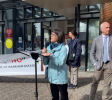 The video inside the article is a record of the third ARAG (Ashburton Residents Action Group) public rally over six years in the residential battle to protect Markham Estate and the surrounding streets and environment.
The video inside the article is a record of the third ARAG (Ashburton Residents Action Group) public rally over six years in the residential battle to protect Markham Estate and the surrounding streets and environment. 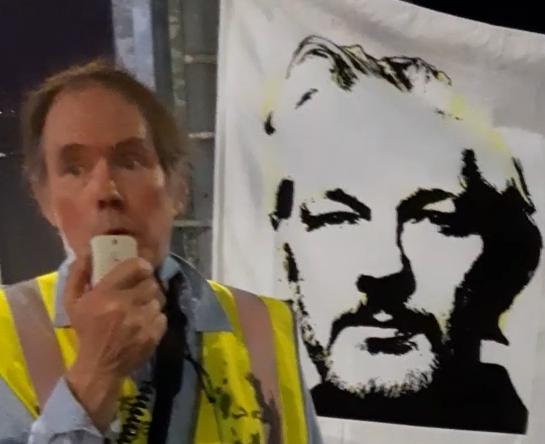
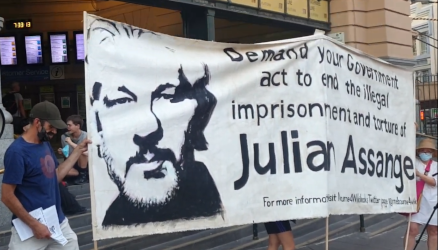
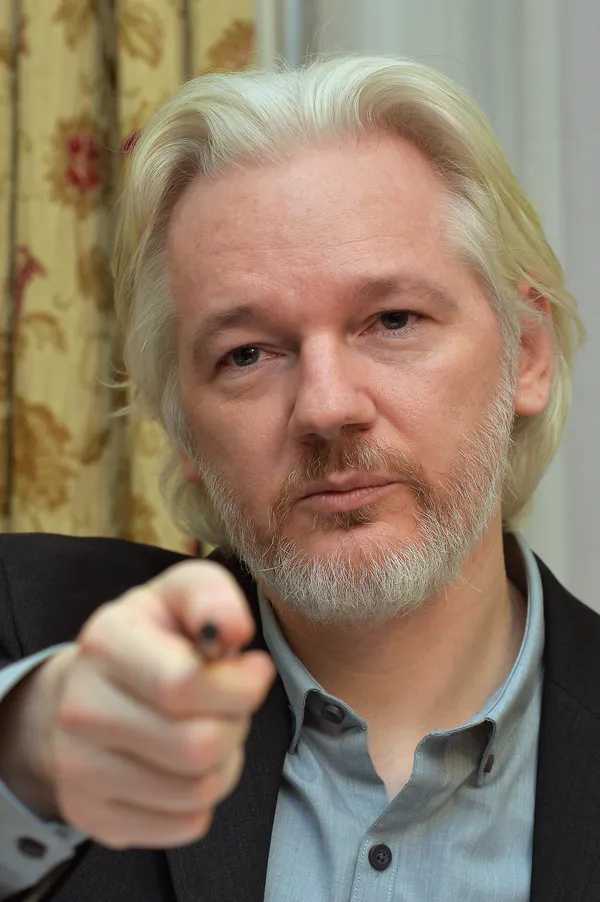
 People concerned about Harkaway, in the Green Wedge, near Berwick are asking for your help to stop development ruining this lovely area. Why don’t you write to the Minister too and plead with him to say "NO." Submissions urgently needed before 5pm on 6 November. Subject: Proposed Rosemaur development for King Road Harkaway, Email to:
People concerned about Harkaway, in the Green Wedge, near Berwick are asking for your help to stop development ruining this lovely area. Why don’t you write to the Minister too and plead with him to say "NO." Submissions urgently needed before 5pm on 6 November. Subject: Proposed Rosemaur development for King Road Harkaway, Email to: 



 Ivor Cummins is a health writer and biochemical engineer, who calls himself The Fat Emperor. He has drafted
Ivor Cummins is a health writer and biochemical engineer, who calls himself The Fat Emperor. He has drafted 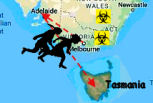 The girls needed a break. The university term had just finished and so had "lock-down". Students, Isla and her two housemates, Chloe and Emily, were anxious to escape Melbourne. Emily's friend Olivia who was studying at Adelaide University had been trying, for more than a year, to entice Emily over for a visit, and this seemed the opportunity. Of course all three girls would go over together and, as they all yearned for a seaside experience, after spending so much time in their rented inner suburban house, they booked into an apartment for five nights in Glenelg, not far from Emily. It would be great! They could go for walks along the beach every morning!
The girls needed a break. The university term had just finished and so had "lock-down". Students, Isla and her two housemates, Chloe and Emily, were anxious to escape Melbourne. Emily's friend Olivia who was studying at Adelaide University had been trying, for more than a year, to entice Emily over for a visit, and this seemed the opportunity. Of course all three girls would go over together and, as they all yearned for a seaside experience, after spending so much time in their rented inner suburban house, they booked into an apartment for five nights in Glenelg, not far from Emily. It would be great! They could go for walks along the beach every morning!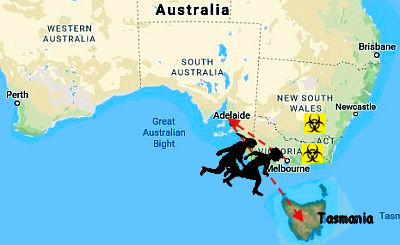

Recent comments